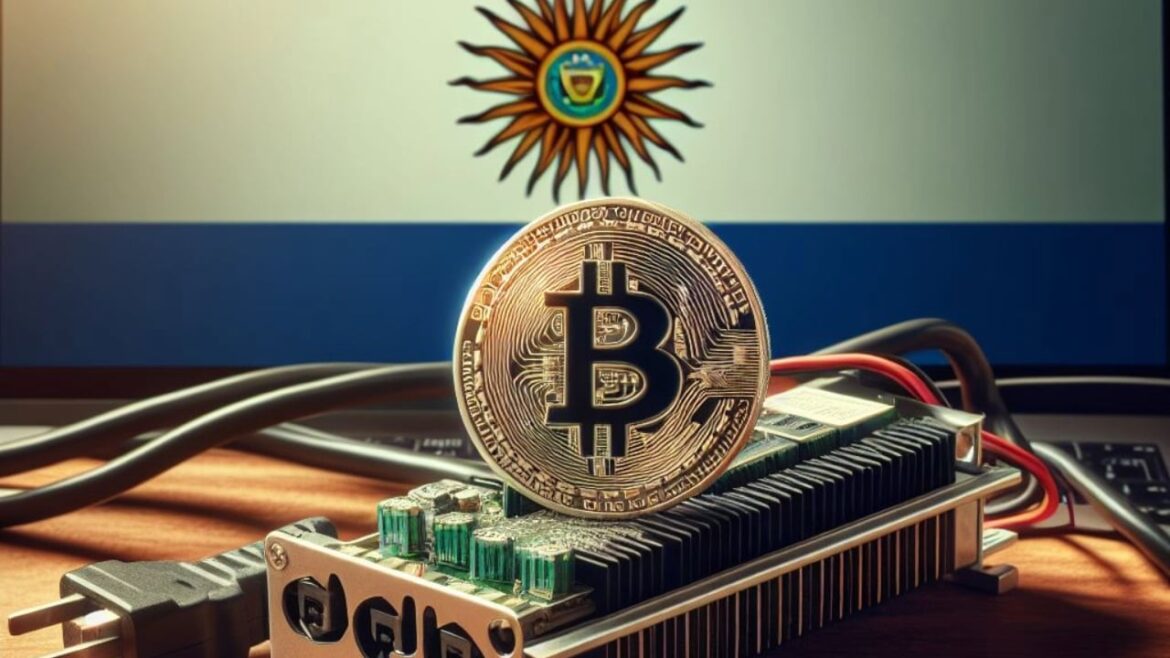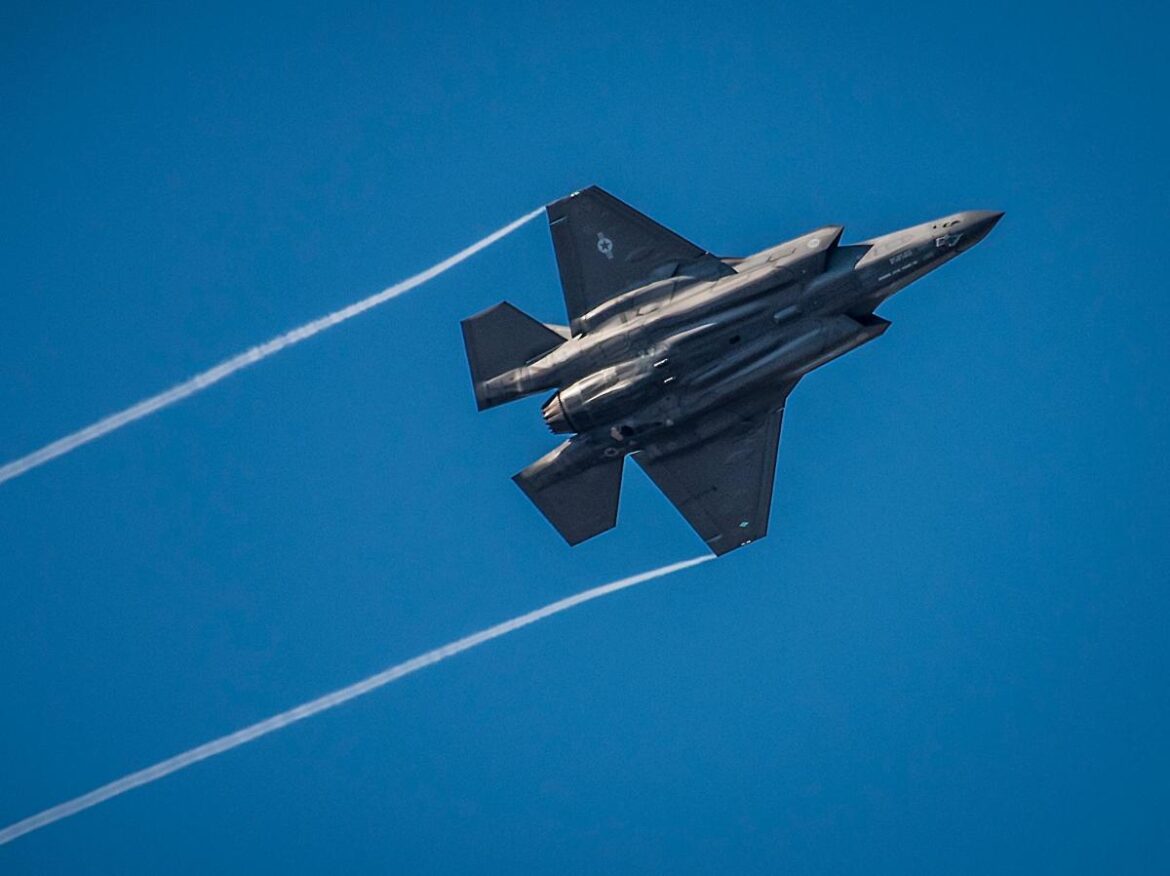 A group of Paraguayan lawmakers is spearheading a bill that seeks to enact a temporary ban on cryptocurrency mining operations in Paraguay for 180 days or until the industry’s activities are properly regulated. The bill alleges that 28% of the energy losses of the National Power Administration (ANDE) correspond, in part, to illegal bitcoin mining […]
A group of Paraguayan lawmakers is spearheading a bill that seeks to enact a temporary ban on cryptocurrency mining operations in Paraguay for 180 days or until the industry’s activities are properly regulated. The bill alleges that 28% of the energy losses of the National Power Administration (ANDE) correspond, in part, to illegal bitcoin mining […]
Source link
Pull
Oil prices pull back from December highs, end lower as traders monitor Red Sea developments

Oil futures on Wednesday pulled back from December highs, ending lower as investors continued to monitor developments in the Red Sea amid worries over potential disruptions to crude shipments.
Price action
-
West Texas Intermediate crude for February delivery
CL00,
-0.34% CLG24,
-0.34% CL.1,
-0.34%
fell $1.46, or 1.9%, to close at $74.11 a barrel on the New York Mercantile Exchange. -
February Brent crude
BRNG24,
-0.39% ,
the global benchmark, declined $1.42, or 1.8%, to settle at $79.65 a barrel on ICE Futures Europe. -
On Nymex, January gasoline
RBF24,
-0.52%
fell 0.2% to end at $2.155 a gallon, while January heating oil
HOF24,
-0.03%
declined 1.7% to $2.624 a gallon. -
January natural gas
NGF24,
+2.35%
rose 2.7% to finish at $2.619 per million British thermal units.
Market drivers
Oil rose to December highs on Tuesday after Yemen’s Iran-backed Houthi rebel militia claimed responsibility for both a missile attack against the containership MSC United VIII and an attempt to attack Israel with drones.
The attacks rattled investors and came after the U.S. last week announced the formation of a naval coalition to address attacks in the region. Crude prices initially saw pressure on Tuesday after shipping company Maersk
MAERSK.A,
MAERSK.B,
over the weekend said it would resume shipments via the Red Sea.
The concerns saw WTI face clear resistance in the $74-$75 per barrel range on Tuesday, though the “bullish market reaction” looks relatively weak given the potential for disruption, said Ipek Ozkardeskaya, senior analyst at Swissquote Bank, in a note.
Meanwhile, demand concerns also loom over the market, particularly in China where strong demand over the first nine months of the year has started to moderate, said Rebecca Babin, senior energy trader at CIBC Private Wealth U.S., in a note.
“The market expects that approximately 800,000 of the 1.2-1.6 million barrels-per-day growth next year will come from China, with jet fuel leading the charge,” she wrote. “The lack of confidence in China’s economy in 2024 remains the market’s biggest concern followed by fear that U.S. production will continue to beat estimates as it did in 2023.”
The cautious sentiment, however, creates a low bar for positive surprises in 2024, Babin said, in contrast to a 2023 where expectations of massive inventory draws were too hard to live up to.
On the charts, a bearish “death cross” pattern appeared Tuesday, with the 50-day moving average for WTI crossing below the 200-DMA.
The 50-DMA is a widely followed short-term trend tracker, while many view the 200-DMA as a dividing line between longer-term uptrends and downtrends. So a death cross is seen by many Wall Street chart-watchers as marking the spot where a shorter-term pullback transforms into to a longer-term downtrend.
See: Crude oil sees first real ‘death cross’ since the pandemic plunge of early 2020
The Japanese yen’s plunge forces Tokyo to pull back on biggest defense build-up since World War II as US weapons get pricier

-
A 10% drop in the yen since December has forced Japan to scale back defense spending, Reuters reported.
-
The currency’s decline has boosted the cost of US-made weapons that Japan plans to procure.
-
In response, Japan is prioritizing frontline weapons and spending less on support systems.
Japan is scaling back plans for its largest military build-up since World War II, after weakness in the yen raised the cost of US-made defense equipment, sources told Reuters.
When the $320 billion budget plan was first announced in December, its estimated price tag was based on a 108 yen-to-dollar exchange rate, according to the report. But the currency has since slid more than 10%, dipping to 151 earlier this week.
And because the defense ministry doesn’t hedge against foreign-currency volatility, it must shoulder higher costs for top acquisition programs like the F-35 stealth fighter and Tomahawk cruise missile, the report said.
In response, Japan is prioritizing outlays on US-made frontline weapons that would be key in any conflict with China, sources told Reuters.
The tradeoff is less money for secondary equipment, such as support aircraft. For instance, an expected order of 34 twin-rotor Chinook transport helicopters was pared to 17 in next year’s budget request, given that their cost rose by about 5 billion yen each. Around half the increase was due to the weak yen.
And the purchase of two ShinMaywa Industries US-2 seaplanes was also scrapped as the aircraft’s price almost doubled from three years ago.
The historic military build-up is in response to rising geopolitical tensions that require the US ally to prepare for any potential conflict with China.
Meanwhile, the yen’s plunge results from ultra-loose monetary policy in Japan, as record low yields in the country have pulled down its competitiveness against other global markets. That’s as other central banks like the Federal Reserve have become more hawkish, making overseas assets more attractive.
Though the Bank of Japan has recently eased its yield curve control — a unique measure that restricted yields from climbing — analysts have suggested that this isn’t enough. In a recent note, Deutsche Bank outlined that yen volatility will continue until the central bank lifts interest rates and sheds its quantitative easing campaign.
Since the start of this year, the yen has plunged 12% against the dollar.
Read the original article on Business Insider
OpenSea ‘unaware’ of any involvement of former exec in $60M rug pull

Nonfungible token (NFT) platform OpenSea says it is unaware of any evidence pointing to a former employee being involved in the infamous AnubisDAO rug pull in 2021 following new accusations on social media.
In an Oct. 6 thread on X (formerly Twitter), the anonymous account NFT Ethics tagged OpenSea, asking it to respond to accusations that its former head of ventures, Kevin Pawlak, is linked to the pseudonymous identity “0xSisyphus” and was involved in “various dubious business dealings.“
1/ Dear @OpenSea, what do you think of the fact that your Head of Ventures, Kevin Pawlak, has been involved in various very dubious business dealings (e.g. Anubis) and pump & dump schemes under his pseudonymous identity @0xSisyphus (& 0xMagellan)? pic.twitter.com/GzIVLJirLE
— NFT Ethics (@NFTethics) October 6, 2023
Both NFT Ethics and blockchain analytics account Lookonchain alleged that 0xSisyphus, and thus Pawlak, played a key role in hyping the AnubisDAO project to investors shortly before the project transferred the freshly raised funds to a series of external wallets.
The thread by NFT Ethics attempted to explain that Pawlak’s alleged role in the AnubisDAO rug pull was premeditated with other developers and laundered the proceeds through the memecoin Pepe (PEPE).
However, an OpenSea spokesperson told Cointelegraph that it was unaware of Pawlak’s involvement in any such activities but also noted that Palwak had a “limited scope” while working there.
“Kevin is a former employee who left the company in June 2023. He had a limited scope while at OpenSea — where he worked in a non-management position. We have no awareness of his involvement with the projects in question.”
“Furthermore, we have no connection to, or information about, the projects in question, as they took place before his time at OpenSea,” said the company representative.
In October 2021, AnubisDAO raised 13,556 Ether (ETH) — worth $60 million at the time — from crypto investors. However, some 20 hours later, the funds were sent to several different wallet addresses, resulting in an instant loss for the investors.
Blockchain sleuth ZachXBT also appeared to throw cold water on the accusations, saying the thread was “one of the most mid-curve” things he’d read.
He added that much of the thread seemed to base many assumptions about 0xSisyphus’ role in the alleged rug pull using “unrelated events without facts.”
That thread is one of the most midcurve things I have read. They make many assumptions off unrelated events without facts.
FixedFloat does tons in volume and same with the other exchanges mentioned. Here is the source address of the April 2023 FixedFloat insider PEPE buys I… https://t.co/0kG2M7DNVi
— ZachXBT (@zachxbt) September 29, 2023
0xSisyphus is also understood to have once offered a 1,000 ETH bounty to anyone who could identify the wallet address that drained the pool and engaged law enforcement in both the United States and Hong Kong, further raising doubts about the new accusations.
Related: AnubisDAO’s rug-pulled 13.5K ETH washes away on Tornado Cash
“Is Sisyphus at fault for gross negligence for lying about the Anubis team multisig? Absolutely 100%. Probably a civil case possible for victims,” wrote ZachXBT.
ZachXBT noted that negligence, in this case, is very different from stealing money from one’s own project. “[As far as I know,] Sisyphus was the only team member speaking with the [Department of Homeland Security].”
“You really think they did not look at him first and monitor his activity?” asked ZachXBT.
He also explained that the two actors most likely responsible for the loss of funds during the AnubisDAO scandal were two pseudonymous users known only as “Beerus” and “Ersan.”
Magazine: NFT collapse and monster egos feature in new Murakami exhibition
Student-Loan Restart Threatens to Pull $100 Billion Out of Consumers’ Pockets
The restart of student-loan payments could divert up to $100 billion from Americans’ pockets over the coming year, leaving consumers squeezed and some of the nation’s largest retailers fearing a spending slowdown.
Copyright ©2023 Dow Jones & Company, Inc. All Rights Reserved. 87990cbe856818d5eddac44c7b1cdeb8
PEPE Price Spikes 10% Following Community Address On Rumored Rug Pull
The value of PEPE, one of the most promising assets in the second quarter of 2023, has been faltering in recent weeks. According to CoinGecko data, the meme coin has been in a 33.6% price decline in the last 14 days.
The PEPE price took a significant hit in the past week, tumbling by more than 20% in a matter of hours. This negative price action was triggered by the rumors of a rug pull orchestrated by the project deployers.
On Thursday, August 24, about $16 million worth of Pepe tokens were moved from the developers’ multi-sig wallet to various crypto exchanges, spreading FUD (fear, uncertainty, and doubt) across the community.
The team behind the meme coin has now published an announcement, addressing the community on what happened in the past few days.
‘Three Rouge Ex-Team Members Responsible For $16 Million Withdrawal’
On Saturday, August 26, one of the anonymous developers behind the Pepe project shed more light on the mysterious $16 million withdrawal from the project’s multi-sig wallet via a post on the official X (formerly Twitter) account.
According to the team member, three ex-team members initiated a series of unexpected withdrawal transactions and transferred the “stolen” Pepe tokens to various crypto exchanges.
A part of the community address explained:
The multi-sig (wallet) was set up to require 3/4 signers present for an approval. Yesterday these 3 ex-team members came back behind my back, logged onto the multi-sig, stole 16 Trillion/ 60% of the 26 trillion multi-sig tokens, and sent them to exchanges to sale. They then removed themselves from the multi sig in an attempt to absolve any association to $PEPE, deleting all of their social accounts and leaving me behind nothing but a message stating “the multi-sig (wallet) has been updated, you are now in full control.”
The anonymous developer established that these former members have been difficult to work with since the inception of the Pepe project. “There has often been conflict, and the majority of the team involved in $PEPE creation started to distance themselves after the first week of project inception”, they said.
While apologizing for the inconvenience and losses caused by the “bad actors,” the project member claims that the remaining 10 trillion Pepe tokens in the multi-sig are “safe” and out of the reach of “nefarious” ex-team members.
Unsurprisingly, the online crypto community had mixed reactions to the project developer’s address. While some individuals seemed convinced by the team member’s account, others raised questions about the sincerity of the claims.
PEPE Jumps By Nearly 10% – Is A Recovery On?
The value of PEPE reacted positively to this address, surging by about 9.6% to reach $0.000000956641. Although it has experienced some correction, the meme coin’s price is still well (roughly 9%) above its seven-day low of $0.000000824545 reached in the early hours of Friday, August 25.
As inferred earlier, panic-induced selling was primarily responsible for the recent PEPE price crash. With confidence seemingly restored, investors will likely be banking on a price recovery.
Fortunately, the daily Relative Strength Index (RSI), an indicator that tracks the balance between the buying and selling pressure of a token, is in the oversold zone for the first time ever. When in the oversold region, the RSI often signals that a trend reversal is on the horizon.
According to CoinGecko data, PEPE currently trades at $0.000000898317, registering a 1.4% price jump in the last 24 hours. With a market cap of roughly $375.9, the meme coin is the 97th-largest cryptocurrency on the market.
PEPEUSDT at $0.00000088951 | Source: daily PEPEUSDT chart on TradingView
Featured image from Unsplash, chart from TradingView






